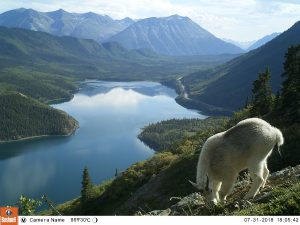
Places
Photos: The stunning biodiversity of Algonquin Provincial Park
Photographer Megan Lorenz shares her experience shooting in Canada's oldest provincial park
- 994 words
- 4 minutes
This article is over 5 years old and may contain outdated information.
Travel
Discover the natural wonders of southern Africa on an overland journey from Cape Town, South Africa to Victoria Falls in Zimbabwe

As an explorer who specializes in documenting extreme forces of nature, when I travel I’m frequently driving into the eye of a hurricane or descending into an active volcano. From time to time, I get invited by travel companies to tag along on their trips, to give lectures, act as a photographer, and share stories of exploration and adventure. I’m the luckiest guy in the world.
Recently, I was invited by Exodus Travels to be a special guest on one of their Africa voyages, a three-week overland journey from Cape Town, South Africa, to Victoria Falls in Zimbabwe. I love Africa, and I had never been to this part of the continent before. From the towering sand dunes of Namibia’s Atlantic coast to the iconic wildlife of Chobe National Park in northern Botswana, I was astounded by the natural beauty of this part of the world. Here are just a few of my favourite images — and the stories behind them — to inspire your own African adventure.
The “Road To Nowhere.” Travel in parts of Africa can be difficult, and the bone-rattling dirt roads of Namibia certainly make you happy to stop at the end of the day, but I personally find these landscapes mesmerizing:

At 160 kilometres long and 550 metres deep, Fish River Canyon is the largest canyon in Africa, and it is as beautiful as the Grand Canyon in Arizona. Every year, die-hard ultra-marathon runners come here to test their endurance in the sweltering heat.

Sossusvlei in Namibia is home to some of the tallest and oldest sand dunes in the world. The orange colour is a result of high levels of oxidized iron in the sand. It’s difficult to capture the immensity of Namibia’s sand dunes in a photograph unless you have something in the frame to provide context, like these climbers scaling the side of Dune 45 (the dunes are numbered). It is best to climb the dune early in the morning before having to deal with the full brunt of the midday sun.

Deadvlei is probably the most iconic spot in Namibia, for good reason! An ancient, dried up oasis, the clay pan still supports the deep-rooted remains of numerous acacia trees that have been dead for hundreds of years. The dry conditions have preserved the trees quite well, and the surreal contrast of the stunted branches against the orange dunes makes this a place I have wanted to photograph for years.

In Namibia, the sand dunes extend all the way to the Atlantic Ocean. The “Skeleton Coast” got its nickname from the hundreds of shipwrecks that can be found along this treacherous stretch of coastline.

The “Skeleton Coast” took on a whole new, literal meaning when our local guide showed us the remains of several human skeletons protruding from the sand. Believed to be a 200-year-old burial site of the Topnaar people, this discovery solidified my initial impression that this is a place where only the heartiest can survive.


Of the “Big Five” game animals (along with the elephant, lion, rhino, and cape buffalo), the leopard is the most elusive. I was very lucky to have seen this one, well camouflaged in the sandy overgrowth of Etosha National Park in northwestern Namibia.

I got so lucky. A group of giraffes arrived at this water hole right at sunset, making for a surreal, almost abstract scene with their reflections in the water. I never saw all of them drink at the same time; at least one was always on the lookout for predators.

I’ve spent years chasing tornadoes, so I was ecstatic to see this dust devil ripping across the African landscape, causing a bit of chaos at the water hole. Dust devils may look like mini-tornadoes, but they are caused by rapidly rising hot, mid-day air that gets spun by converging winds close to the ground.

A complex solar halo display in the sky above Botswana. These halos around the sun are caused by flat, six-sided ice crystals in the upper atmosphere which refract sunlight, similar to a rainbow. Most halos are circular, but on rare instances, more complex shapes like these can be seen.

This scene of an elephant calf with its mother in Chobe National Park, Botswana was heart-warming. Elephant families are very close and they cherish their young.

George Kourounis is one of The Royal Canadian Geographical Society’s Explorers-in-Residence. A well-known television personality and expert on extreme natural phenomena, he has carried the flag of the RCGS to Myanmar, Botswana, the United States, Ecuador, Turkmenistan, Peru, Namibia, Canada, Nepal, Bahamas, North Korea, Vanuatu, South Africa, Zambia and Zimbabwe. Follow him on Instagram.

Are you passionate about Canadian geography?
You can support Canadian Geographic in 3 ways:

Places
Photographer Megan Lorenz shares her experience shooting in Canada's oldest provincial park

Wildlife
With millions of photos taken globally each day on smartphones, researchers have found they may also contain important ecological clues about our rapidly changing planet

People & Culture
A roundup of the best photos of the northern lights submitted to our hashtag this week

People & Culture
Photos that bring us peace from our Can Geo Photo Club members